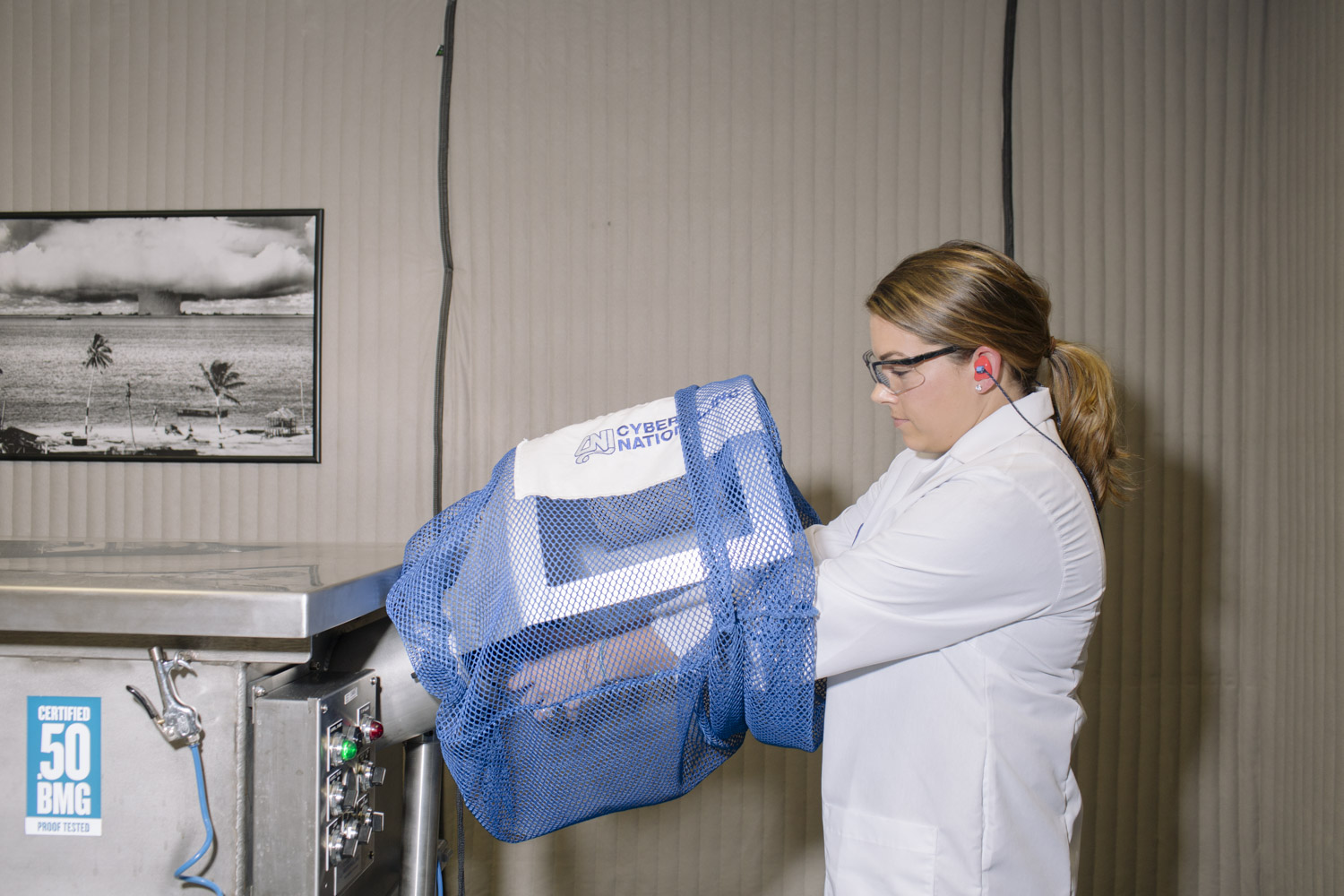The criminals terrorizing the East Bay suburbs were getting bolder.
They robbed a family in well-to-do Fremont at gunpoint. They broke into another house with pistols drawn, ready to confront residents. They shot a local school board member and pistol-whipped her husband as the victims unloaded groceries in their driveway, and then fled with a purse and cell phone.
For weeks in the summer of 2016, police struggled to gather enough evidence to arrest the men. Then one of them tried to dispose of a gun — evidence that the area crime lab was uniquely positioned to use to crack the case.
As one suspect fled from carjacking a Danville man in his garage, police say he tossed his Glock in a commuter lot beside the freeway. Investigators from the county gang task force, who were monitoring the man through a wiretap on his cell phone, picked up the gun within minutes. They delivered the weapon to the Contra Costa crime lab, where technicians used a sophisticated ballistics database to link it to shell casings from three other recent shootings, including the one that left the school board member hospitalized.
With those leads in hand, investigators gathered enough evidence to arrest eight members of the so-called Swerve Team gang and charge them with three murders, 14 attempted murders, six armed robberies, and two car jackings.
“The gun was the first link,” said Robert Pamplona, a senior inspector on the county’s gang task force.
Law enforcement departments across the country have access to the same system that Contra Costa has been using to catch the people committing gun crimes on its streets. It’s known as the National Integrated Ballistic Information Network, and it’s maintained by the Bureau of Alcohol, Tobacco, Firearms, and Explosives. NIBIN is like a giant fingerprint database, but for guns, which when fired leave unique markings on each shell casing they eject. By entering images of fresh casings into the system, investigators can make matches to those already on file, connecting different shootings to the same gun, and from there to shooters or gangs.
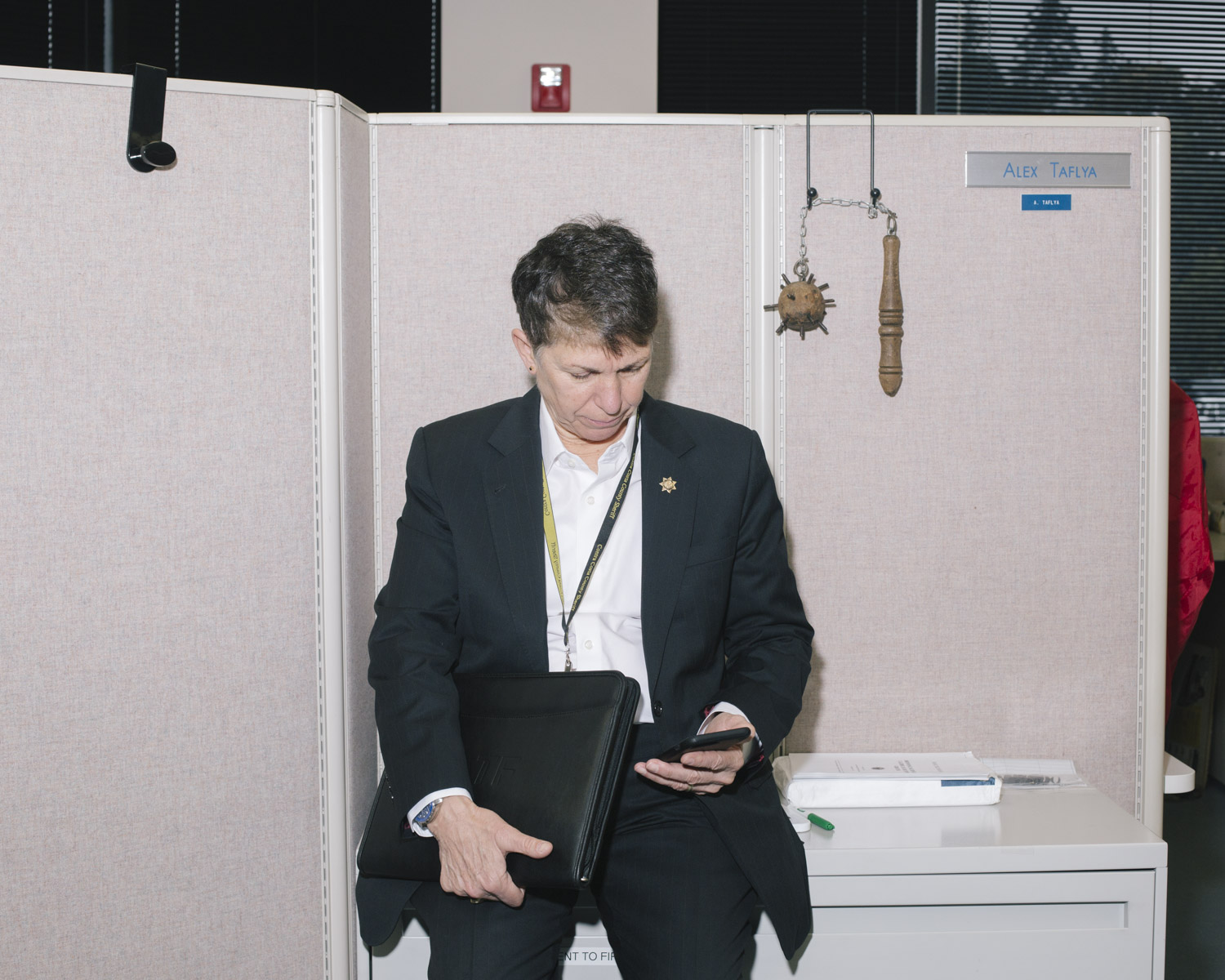
But NIBIN only works if police assiduously log all the casings they recover, and do so quickly, before trails grow cold. In many cities and counties, that’s not happening. Studies show many police departments and crime labs are misusing NIBIN, or not using it at all.
“Research has consistently shown that police investigators often do not receive forensic evidence testing results until after their investigation has concluded,” a team from Sam Houston State University in Texas wrote in the Journal of Forensic Sciences last year. “These time lags prevent investigators from using this critical evidence in the manner that we expect it to be used: to assist in identifying suspects in criminal cases.”
The Contra Costa crime lab’s proficiency with NIBIN is the result of protocols put into place by its no-excuses director. Those procedures have also made it an exception. In partnership with NBC Bay Area, The Trace surveyed California’s 18 city and county crime laboratories. On average, they report taking three months to enter evidence into NIBIN and get back leads. That’s more than 15 times as long as the turnarounds that Contra Costa achieves.
In the Bay Area, the San Francisco Police Department’s crime lab last year processed bullet casings up to 95 days after police collected them. The Santa Clara crime lab reports that it takes “months to a year” to run casings through NIBIN and look for leads. Both labs say they are working to narrow that window, and San Francisco says that, so far this year, its average turnaround time is about eight days.
At least three California counties — Fresno, Ventura and Orange — are not using NIBIN at all.
“If a lead is taking eight months to get into hands of investigators, it’s worthless,” said Sam Rabadi, who was head of the firearms division at ATF in 2012 and 2013, and who now works for Vigilant Solutions, a private investigative technology company. “The overarching goal is to get to the shooter before they shoot again.”
Public officials are desperate for more ways to link guns to shooters. About two out of every five murders in the United States go unsolved, according to the FBI. Solve rates for nonfatal shootings are in the single digits in several major cities.
Unapprehended, perpetrators strike again. Street justice fills the void, leading to revenge shootings.
“NIBIN is a chance to deter that small number of people who are prone to grab guns and shoot at other people,” said William King, who authored the first comprehensive report on NIBIN for the U.S. Department of Justice in 2013. “NIBIN holds those people accountable.” By misusing the ballistic fingerprinting, or not using it at all, King said, “police have failed a lot of communities in the inner cities.”
Better ballistics testing, on its own, won’t fix the problem. Many police departments are understaffed, have strained relationships with the communities they rely on for witnesses, or simply don’t prioritize solving gun crimes. But taking full advantage of NIBIN’s capabilities can help cops catch shooters who might otherwise remain at large.
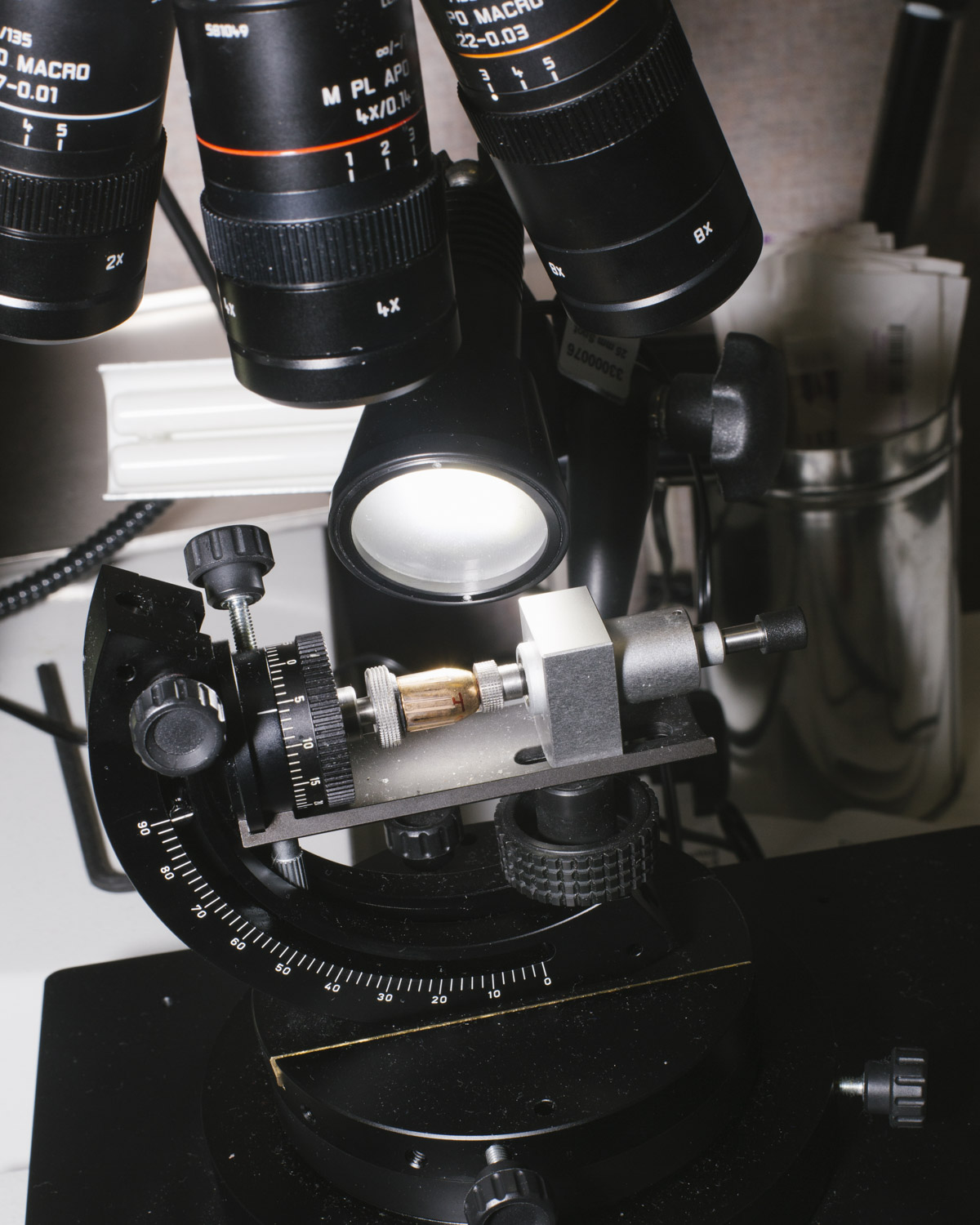
Contra Costa County used to be among the many jurisdictions underperforming in their use of NIBIN. Then, in 2015, a former San Francisco detective named Pamela Hofsass took over as director of its crime lab. Without an influx of funding or manpower, she transformed how her department taps the technology’s potential. The results she achieved helped shift how law enforcement throughout the county approaches solving gun crimes.
Hofsass dramatically cut the time it took to get NIBIN leads back to sheriffs deputies and local police officers. That, in turn, helped them make more arrests, giving them greater incentives to pick up shell casings at shootings and bring them to the lab.
“Back in the day, when there was a shooting where no one was hurt, the officer might have kicked those casings into the curb,” Hofsass said. “They thought, there’s no blood here, no injured victims, there’s nothing. Now we know that the people who end up killing people usually start by shooting randomly.”
Ron Nichols, a former ATF NIBIN head who is widely credited with redesigning the agency’s protocols to get faster results, said the changes that Hofsass wrought are possible for any department.
“It’s less about money and resources,” he said, “and more about getting labs to change their mindset about how they do things.”
Ballistic investigations used to be an analog business. Firearm examiners would take Polaroid pictures of cartridge casings and store them in paper files. When a new shooting happened, they’d pull out the photographs and eyeball them for matches.
Beginning about 20 years ago, the ATF launched NIBIN, and brought the art of ballistics comparisons into the digital age. These days, after police send shell casings to a crime lab, staffers load them one at a time into an imaging machine, which takes photographs and uploads them into the database. A gun collected as evidence goes through its own procedure. Technicians test fire it into a water tank, then gather the casings and enter them into NIBIN, looking for matches with ballistic signatures already on file.
The ATF now touts NIBIN as a cornerstone of its national crime-fighting operation. The agency maintains 179 NIBIN sites across the country, serving 3,000 law enforcement organizations. The system contains about 2.8 million images of shell casings.
But laggards remain, leaving blind spots in the system. As of 2016, according to The Marshall Project, 11 states didn’t have a single NIBIN machine. Another 19 had only one or two. The ATF declined to provide The Trace with updated numbers.
Investigating America’s gun violence crisis
Reader donations help power our non-profit reporting.
Where NIBIN is available, many agencies are still struggling to realize its potential.
In Chicago, officials working to combat the city’s high murder rate have made efforts to collect more shell casings. A Chicago Police spokesman, Anthony Guglielmi, said officers now try to pick up and process shell casings after every reported shooting, even when no one is hurt. But that requires the department to know when a round has been fired, and the city has installed gunshot-detection sensors in only about half of all precincts. In the others, it’s extremely difficult for officers to locate casings after the fact.
Processing times can also hinder investigations. Casings for homicides usually get entered into NIBIN within a couple of days, Guglielmi said. But lower priority cases, including shootings that don’t result in injuries, take a few weeks.
Experts say that delay can stall officers at critical moments — when it might be possible to stop someone from killing, or killing again.
“The sooner that I can get it [a lead] in my hands, the sooner I can get to the shooter before he or she reoffends,” ATF Firearms Operations Division Chief Michael Eberhardt told NBC Bay Area.
Last year, the ATF dispatched vans equipped with NIBIN equipment to Chicago, Baltimore, and Houston. The equipment in the vehicles is no more sophisticated than what each city is already using in-house. The bureau’s goal was to show local investigators how fast evidence can be processed when protocols are streamlined, and to entice investigators by getting them quick leads that help them bring more shooters to justice.
Spread over 700 acres of rolling hills northeast of San Francisco, Contra Costa County is dotted in some parts with cow farms and in others with desperate urban blight.
A war has raged for years in the western part of the county between gang members in Central and North Richmond.
“Out of the friends I had growing up, six are dead and three are incarcerated and not coming home,” said LeDamien Flowers, a North Richmond community organizer.
Within Richmond city limits, one in every three homicides went unsolved between 2011 and 2016.
When Hofsass took over the Contra Costa County crime lab in 2015, there was a backlog of more than 700 shell casings waiting to be scanned. On average, it took well over a year for the lab to get back to police with the results of a ballistics test.
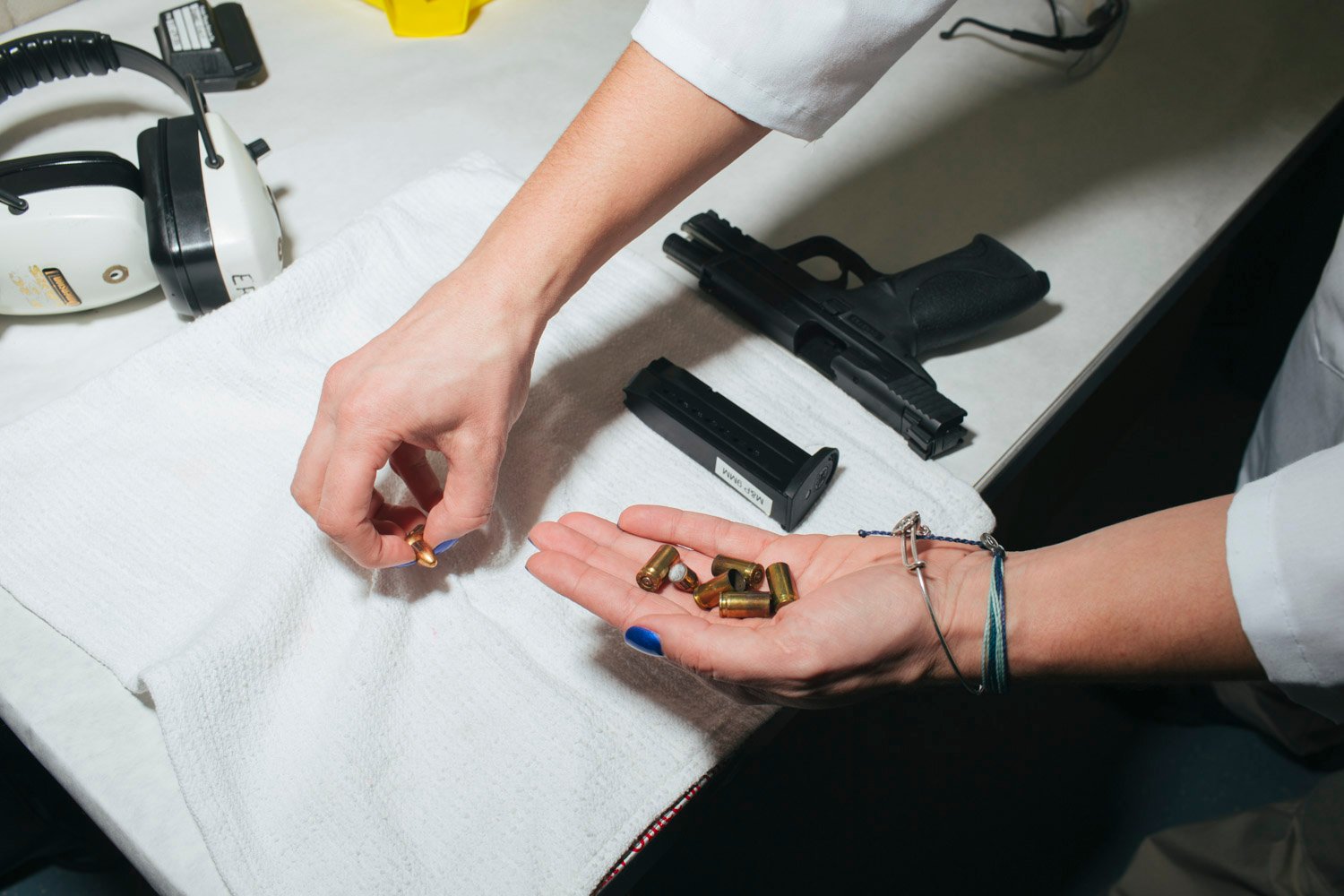
“We’re talking about major crimes — attempted homicides or homicides with fired cartridge cases just sitting there,” she said.
Hofsass understood from her own experience as a detective that the lab had to do better.
“I knew from when I was in homicide, if I didn’t have critical information, then I wasn’t moving forward in that particular aspect of the case,” she said. “We had to think about what the detectives really need — to streamline it and strip it down. So that’s what we did. We overhauled the whole process.”
On her watch, Hofsass resolved, technicians would get detectives leads within at least four days of the shooting — two days to get the evidence to NIBIN, another two to get the lead back from the ATF. But first, she had to get her staff onboard. Prior to Hofsass’s arrival, “we were just functioning to put out fires right before things went to trial,” said Donnie Finley, her chief deputy. “Some days her message went over better than others. I remember people saying ‘We can’t do that, we don’t have enough people.’ ”
Tidy and no-nonsense, Hofsass convinced her team that they didn’t need more sets of hands, just smarter protocols.
Before Hofsass took over the lab, ballistic evidence routinely sat on shelves while it waited to be tested for DNA and fingerprints. Now it was immediately assigned to a technician. She cross-trained her staff so members outside the ballistics team could help out colleagues when their own workload got thin. Investigators who primarily worked crime scenes were taught how to enter evidence into NIBIN on the side. Latent fingerprint examiners were shown how to record the make, model, and function of crime guns when ballistics tests got backed up.
Hofsass bought iPads to replace the paperwork that lab technicians had been doing by hand. Lab workers who used to have to draw pictures of shell cases and their markings now snapped photos instead.
She also asked for help from the ATF. At many local police labs, in-house criminalists do the initial side-by-side comparisons between shell casings they’ve entered into NIBIN and possible matches that the computer returns. That’s important work, since those initial hits are the ones that investigators can run with right away as they hustle to get shooters off the street. But it’s also time consuming.
In Contra Costa, and at 19 other labs across the country, those first matches are now made by ATF technicians based in Huntsville, Alabama. Hofsass said that’s been a huge help streamlining her process and opens up time her technicians can use to button up cases when they are ready to go to trial.
“We’re here to make the world a safer place. So why would you want to take your time?”
Pamela Hofsass, Contra Costa Lab Chief
The ATF says it wants to do image comparisons for more agencies. The bureau plans to expand this service to as many as 30 additional sites next year.
The ATF also lent Contra Costa two technicians to help test fire about 600 crime guns that had been sitting in storage, and get that ballistic information into the NIBIN system. As they plowed through their backlog, Contra Costa crime lab workers started with the most recent cases, so they could get leads to detectives while the evidence was still fresh.
Today, Hofsass’s team is completely caught up. To keep her staff motivated, she painstakingly plans elaborate ceremonies to recognize techs who meet their benchmarks. When Hofsass hears that efficient lab work helped to make an arrest, or clear a suspect, she broadcasts that information to her staff, to make sure they know the work they’re doing matters.
“I’m saying there’s a way to be efficient, effective, and maintain your quality,” she said. “We’re here to make the world a safer place. So why would you want to take your time?”
Before Josh Medel worked for the FBI/Contra Costa County Safe Streets Task Force, he was an intelligence analyst in Iraq. He studied satellite images, drone data, and classified reports, trying to discern what opposition leaders were were planning. In Contra Costa, he looked at crime reports, social media feeds and cell phone data to figure out how who was running Contra Costa’s gangs and what they might do next.
When he heard what Hofsass was doing to produce faster ballistics results, he called the lab and asked for a year’s worth of the data it had collected. Analysing it, he mapped out a sprawling diagram of the county’s gun crime: which guns were connected to which shootings, and which gang members might be connected to those guns — valuable information for prosecutors in California, where gang affiliation can mean longer prison sentences. In some cases, the webs sprawled to dozens of incidents.
The picture Medel was able to put together from Contra Costa’s NIBIN data was usually not enough to yield arrests on its own. But it was packed with valuable clues.
On the day of the carjacking that broke the Swerve case, police test fired the gun that the suspect tossed in the commuter lot and entered the spent casings into NIBIN. When the ATF sent initial matches back, the results showed that three other recent shootings might have been done with the same weapon.
Investigators then gathered surveillance videos, GPS, DNA and cell phone data looking for other ties between the four shootings. They plugged that material into Medel’s map to figure out where a particular crime spree might fit in with wider county trends. In the end, the Swerve Team linked 16 guns to 42 different shootings. Seven men were charged in the crimes. Police said that officers confiscated more than 200 illegal guns as a result of the investigation.
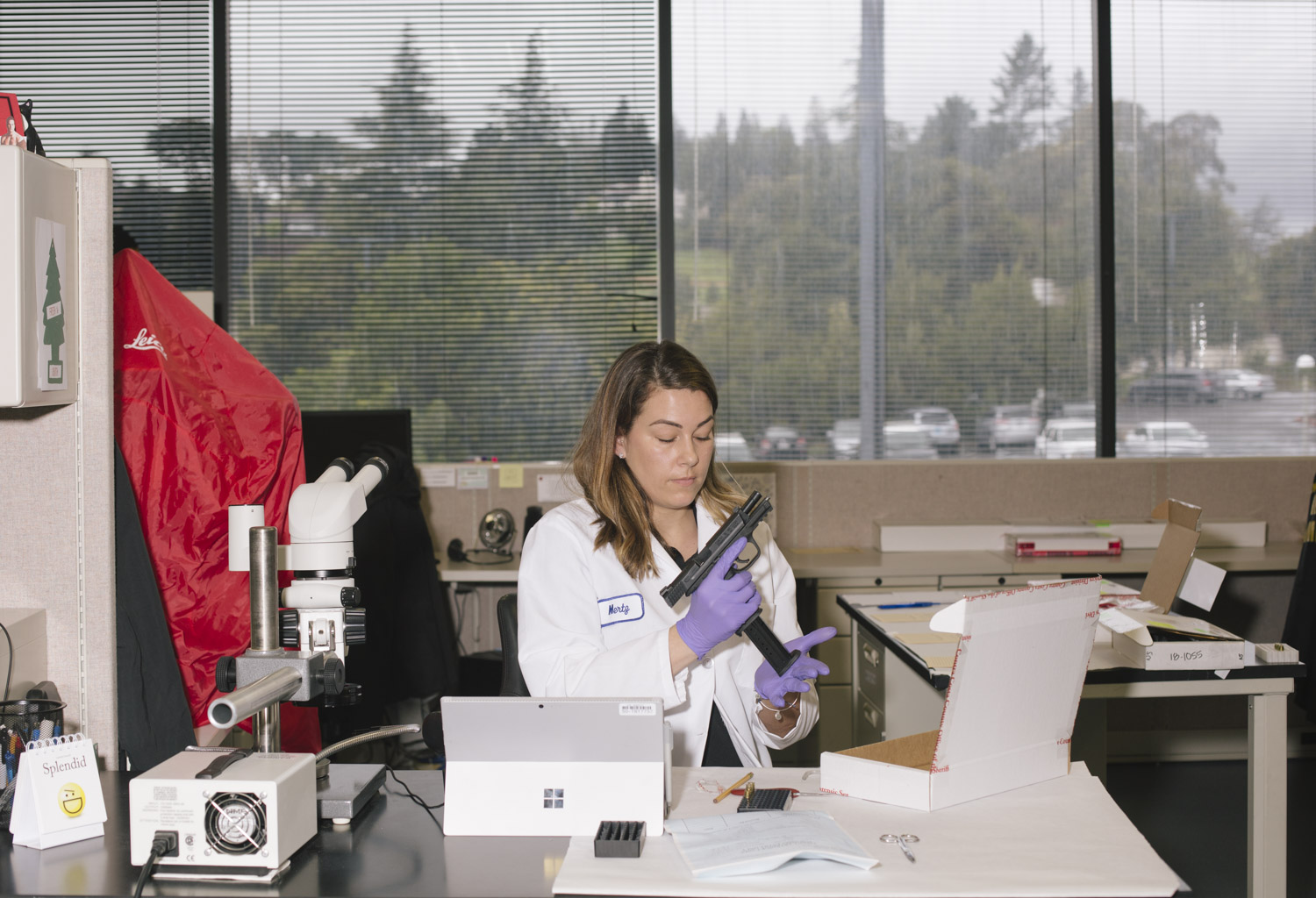
Getting shooters and guns off the street was not the only victory that came with the Swerve Team arrests. The headlines, and the fact that ballistics leads were key, got the attention of police at departments large and small across the Bay Area.
“Cops started saying, ‘Wow, maybe we need to clear out our evidence room'” Medel said.
Hofsass took advantage of the renewed enthusiasm for NIBIN to further refine Contra Costa’s use of the technology. She set up a drop box at the county’s central evidence locker. There, casings can be deposited round the clock with a simple evidence form, even if they aren’t collected as part of a criminal case. She’s planning a second drop box at the county jail, where police have to go regularly anyway when they book suspects.
For Carol Brown, the Swerve Team arrests marked a life-changing moment. A school board member in the leafy San Francisco suburb of Orinda, Brown and her husband were unloading groceries in their driveway in September 2016 when masked men attacked them. They beat Brown’s husband with a gun and shot her through the arm and chest. The crime made headlines across the Bay Area, shocking in its apparent randomness.
Brown would spend two days in a locked ward in the hospital, protected from assailants who remained at large. On the third day came the NIBIN hit, when investigators connected the gun tossed in the commuter lot to shell cases from Brown’s driveway, compiling enough evidence to arrest the suspects.
Brown didn’t know that Hofsass’s ballistics team helped solve the case. What she knew was that she was safe again.
“I will not soon forget that moment,” said Brown. “Hearing they were in jail was the the first time after it happened I felt like I could breathe.”
